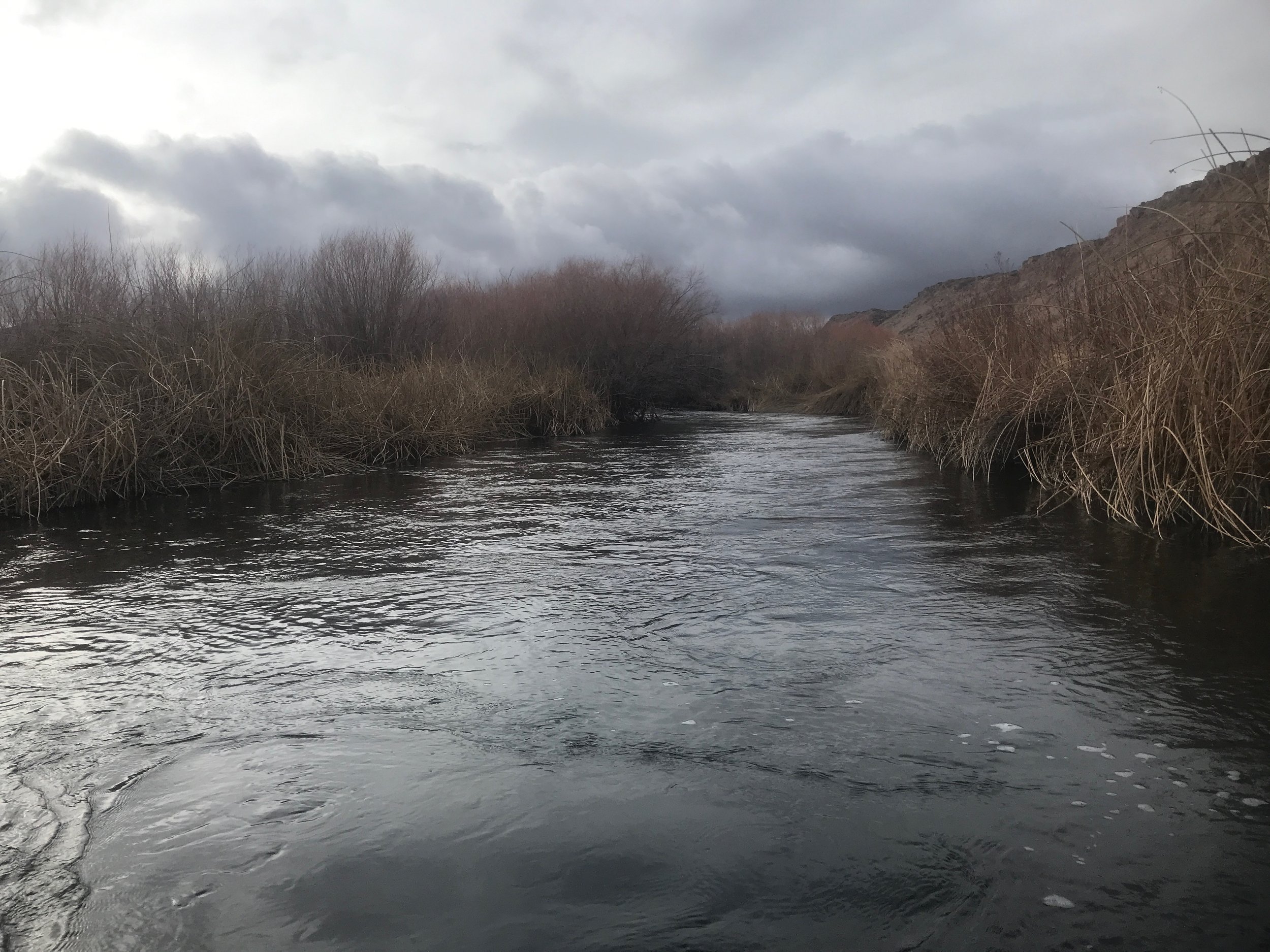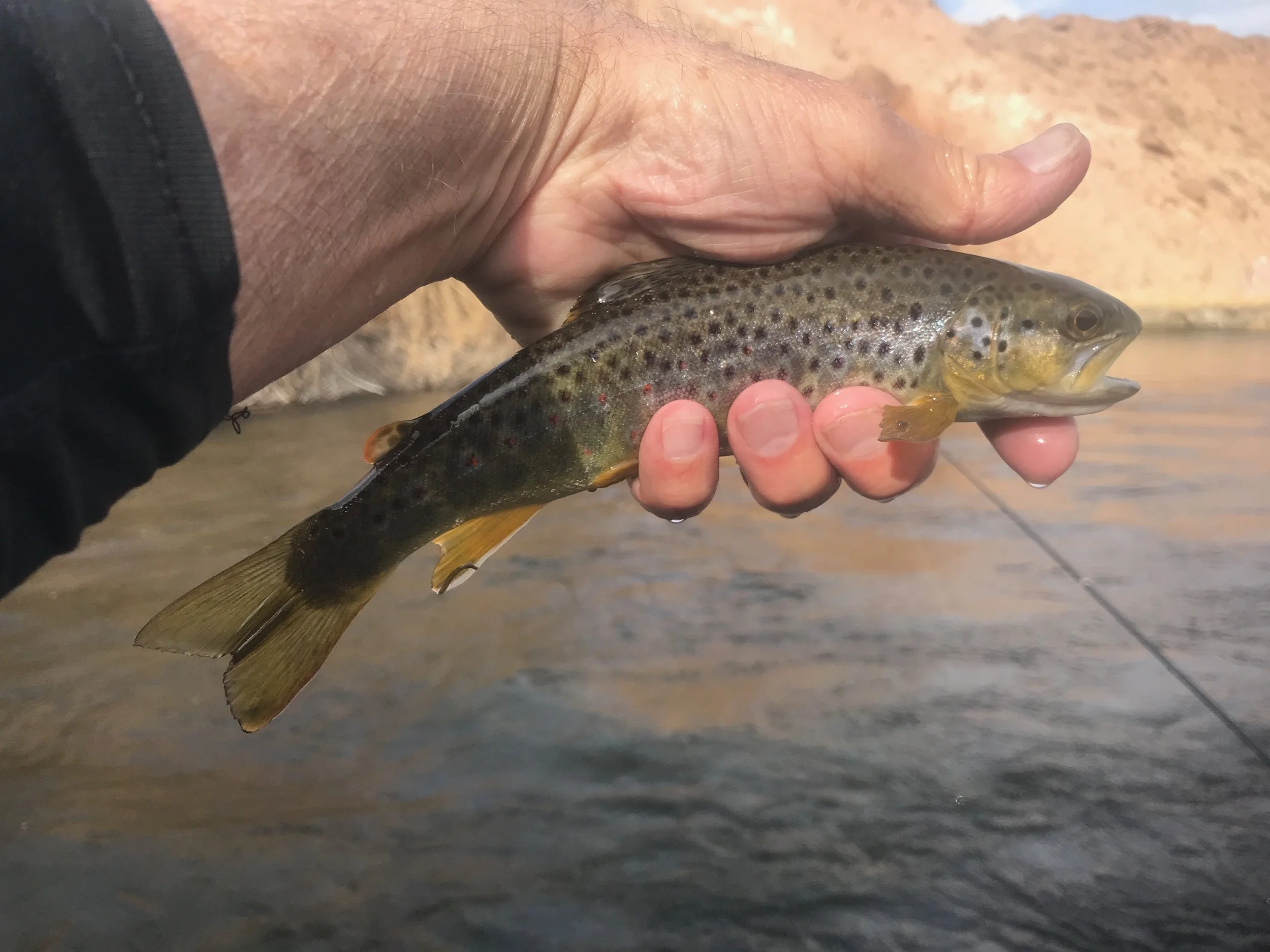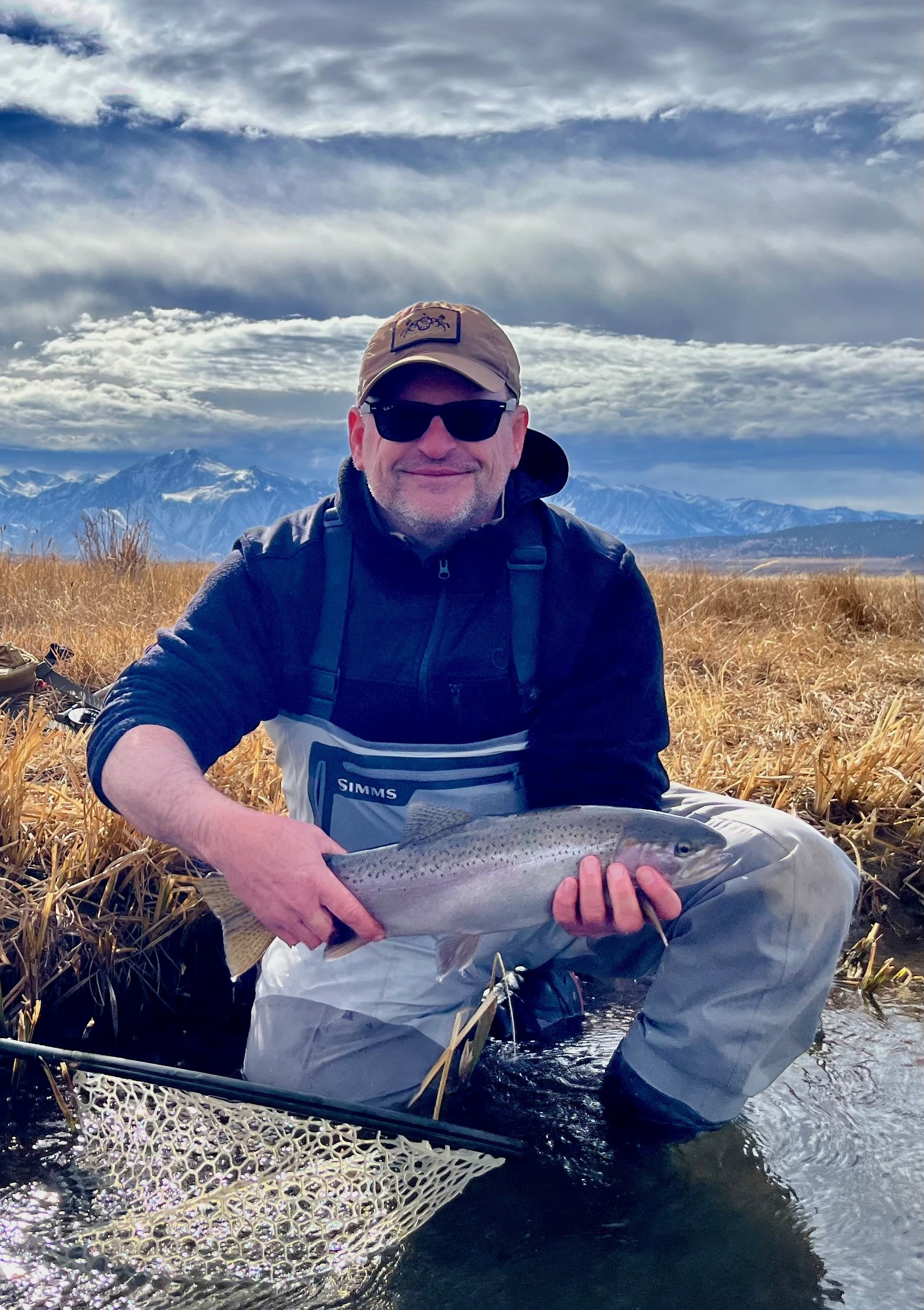The first big winter series of storms is moving through the Eastern Sierra this week and into next week. After the storm we will know how much snow is on the ground and if upper elevation waters will be accessible by vehicle. It might be time to dust of the snow mobiles, snow shoes and cross country skis. Fishing before the storm was more like a pleasant warm fall day than a mid-winter day. Nymphing continues to be the most productive method of fishing Eastern Sierra waters right now. Looking ahead mid-February through March should offer good mid-day dry fly fishing. Blue wing olive mayflies, black fly larvae, midges and winter skwala stoneflies are the insects that fly fishers are imitating.
While winter storms are brewing at upper elevations in the Sierra mountains the Owens Valley offers an opportunity to get out of the storms.
Lower Owens River
Wild Trout Section:
Flows are holding at 150 CFS and fly fishers can safely wade and access most of the river. Stomach samples from lower Owens River brown trout reveal that the trout are feeding on black fly larvae, mayfly nymphs and skwala stonefly nymphs. Dry fly activity has been minimal at best. If you’re on the right spot at the right time you will see trout feeding on the surface. Early in the morning fish midge imitations like size 18 or 20 Griffiths gnats. Middle of the day is when the mayflies are hatching and size 18 blue wing olive parachutes, olive sparkle duns and blue wing olive last chance cripples. Nymphing is consistent all day with a Euro rig or with an indicator rig. Key to success is getting the flies to bounce along the substrate. Fish with about 9 mm of tungsten beads or a size 1 split shot. While an exact imitation of a black fly larvae is not needed, fish with tiger midges, zebra midges and cream midges to imitate the black fly larvae. To imitate the mayfly nymphs use olive quilldigons, Frenchie’s, hot spot pheasant tail nymphs, bead head flash back nymphs, olive quill nymphs and olive perdigons. For the skwala stone fly nymphs fish with a size 12 or 14 stoner nymph and copper John.
Nymphing in the wild trout section of the lower Owens River is producing wild brown trout to 12 inches on stoner nymphs and olive quilldigons.
Hot Creek
Interpretive Site:
Time will tell if this area continues to be vehicle accessible or if this series of winter storms will drop enough snow to make it impossible to drive out to Hot Creek. Nymphing with tiger midges, zebra midges, brassies, bead head flash back pheasant tail nymphs, Frenchie’s, olive quilldigons and hot spot pheasant tail nymphs is producing wild brown and rainbow trout. Dry fly activity has been sporadic. A key to success here is to carry a dry fly rod rigged up with a blue wing olive parachute, olive sparkle dun or Griffiths gnat. The hatch period has been short and fly fishers don’t have enough time to rerig before the surface activity is over.
Zebra midges in size 18 to 22 are producing wild rainbow and brown trout in Hot Creek fished under an indicator or on a Euro rod. Photo by Chris Cargo.
Hot Creek
Canyon Section:
This section will be harder to access if we get the anticipated snow fall out of this series of snow storms. If the road gets closed be sure to park out of the way of the Hot Creek Ranch driveway. Nymphing in the canyon before the storm was fun with nymphs on the Euro rod. Olive quilldigons, stoner nymphs, hot spot pheasant tail nymphs, scuds and olive burlap caddis flies are working on the Euro rod. Under an indicator use bead head flash back pheasant tail nymphs, olive WD40’s, tiger midges, zebra midges, brassies and blood midges.
Don Collier from Hermosa Beach caught this trophy rainbow trout while being guided by Richard Lancaster on the upper Owens River.
Upper Owens River
Above Benton Crossing Bridge:
Vehicle access was right up to the entry gates in the barbed wire from Benton Crossing Bridge to Longyears before the storms. The amount of snow left by this series of snow storms will determine if this area continues to be vehicle accessible or if fly fishers will need to snow shoe, cross country ski or snowmobile in. Trophy trout continue to offer fly fishers the opportunity to catch a personal best trout on the fly. The trophy trout are spaced out in deep holes, deep runs and cutbanks from Benton Crossing Bridge to Longyears. The trout are resting and feeding looking for a big bite of calories. Offering these trophy trout a size 12 stoner nymph, green/gold wire Prince nymph and gold ribbed hare’s ear variation is offering them that big calorie meal. Egg patterns like the tungsten taco, red San Juan worms and squirmy wormies are producing trophy trout for fly fishers. There are a number of resident juvenile trout to 10 inches willing to take a small nymph or dry fly. Olive quilldigons, bead head flash back pheasant tail nymphs, olive quilldigons, Adams parachutes and blue wing olive parachutes are patterns that will produce these smaller trout.
Bishop Creek Canal is flowing clear and is as low as I’ve seen the canal.
Bishop Creek Canal
Behind the Old Ford Dealer:
Low water continues to make fly fishing on Bishop Creek Canal tough. With the low water levels the trout are supper spooky. Fly fishers need to find faster riffle sections or deep holes where the fish are not spooked easily. Tiger midges, zebra midges, blood midges, bead head flash back pheasant tail nymphs and olive quilldigons are the fly patterns that are fooling the wild trout.
Trout Rodeo
Open Waters of the Eastern Sierra:
The third annual trout rodeo will be on Saturday February 10th, 2024. Contact Sierra Bright Dot if you want to know about winning strategies.






